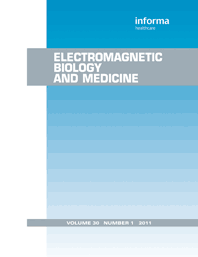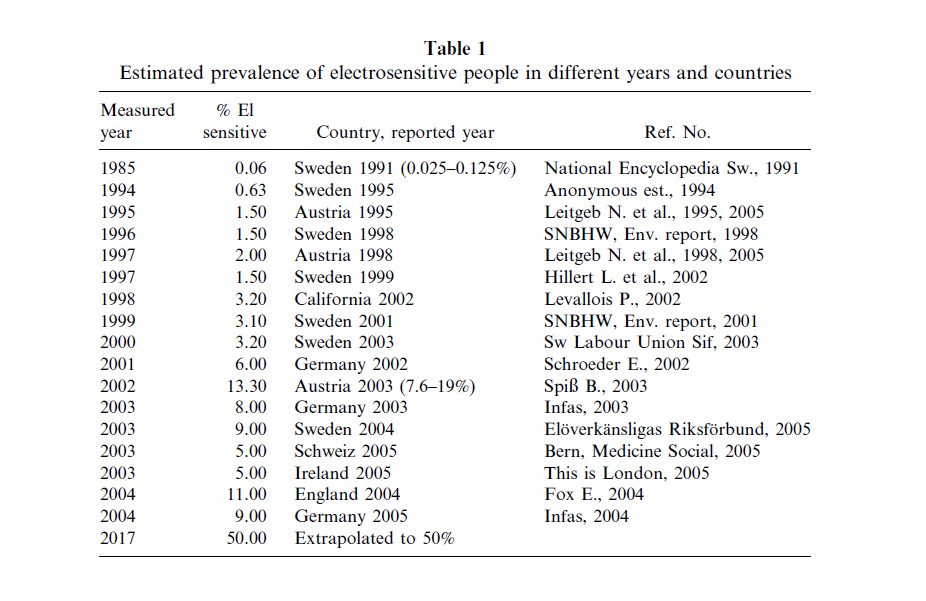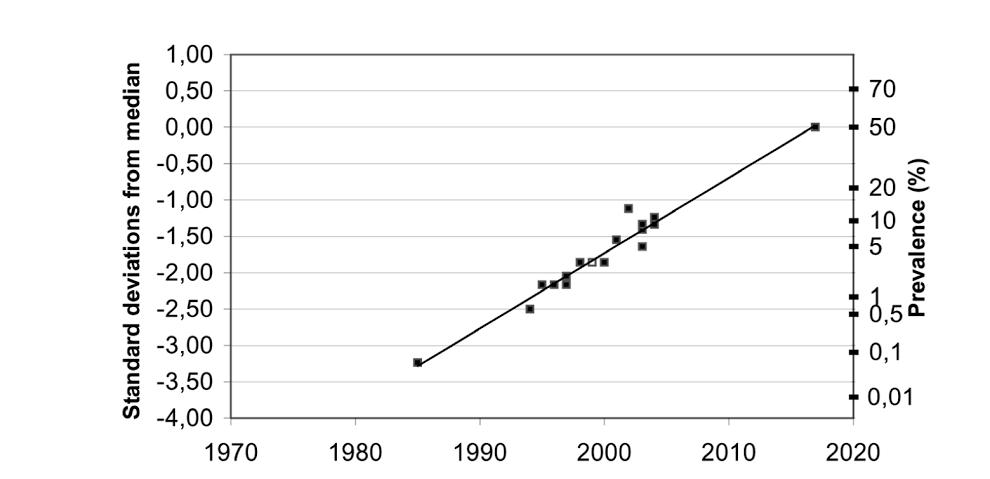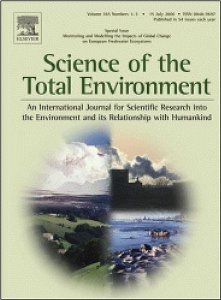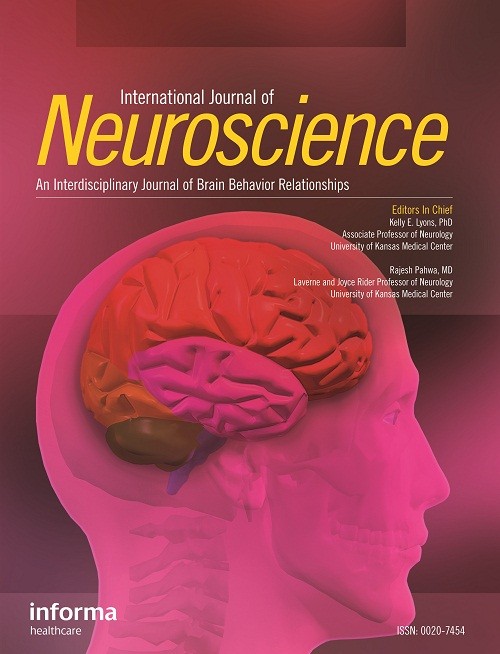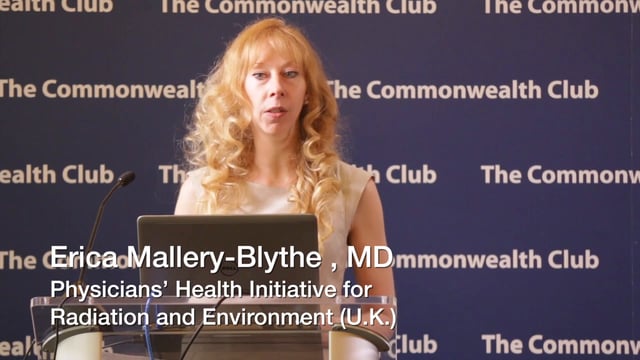Dopo il quinto congresso dell’Appello di Parigi tenutosi il 18 maggio 2015 presso la “Royal Academy of Medicine” di Bruxelles ed incentrato sul tema delle ipersensibilità ambientali, gli scienziati Europei, Americani e Canadesi partecipanti hanno deciso all’unanimità di creare un gruppo di lavoro e scrivere una Dichiarazione Internazionale Comune per richiedere un riconoscimento ufficiale di queste nuove malattie e delle loro conseguenze sanitarie in tutto il mondo.
Con questa Dichiarazione, oltre ad invitare enti ed istituzioni nazionali e internazionali (ed in particolare l’OMS) ad assumersi con urgenza le proprie responsabilità in termini di riconoscimento di Elettroipersensibilità e Sensibilità Chimica Multipla come malattie reali, includendole conseguentemente nella Classificazione Internazionale delle Malattie (ICD), hanno invitato le suddette istituzioni a: 1) adottare semplici misure cautelari di prevenzione dei danni da esposizione ai Campi Elettromagnetici, 2) informare le popolazioni in merito al problema, 3) nominare dei veri e propri gruppi di esperti indipendenti per valutare i rischi sanitari in totale obiettività scientifica (cosa che allo stato attuale non accade).
Testualmente viene detto:
“We, physicians, acting in accordance with the Hippocratic Oath, we, scientists, acting in the name of scientific truth, we all, medical doctors and researchers working in different countries worldwide, hereby state in full independence of judgment,
that a high and growing number of persons are suffering from EHS and MCS worldwide;
that EHS and MCS affect women, men and children;
that on the basis of the presently available peer-reviewed scientific evidence of adverse health effects of electromagnetic fields (EMFs) and various chemicals, and on the basis of clinical and biological investigations of patients, EHS is associated with exposure to EMFs and MCS with chemical exposure;
that many frequencies of the electromagnetic spectrum (radio- and microwave-frequencies as well as low and extremely low frequencies) and multiple chemicals are involved in the occurrence of EHS and MCS respectively;
that the trigger for illness can be acute high intensity exposure or chronic very low intensity exposure and that reversibility can be obtained with a natural environment characterized by limited levels of anthropogenic EMFs and chemicals;
that current case-control epidemiological studies and provocative studies aiming at reproducing EHS and/or MCS are scientifically difficult to construct and due to the present design flaws are in fact not suitable to prove or disprove causality; in particular because objective inclusion/exclusion criteria and endpoint evaluation criteria need to be more clearly defined; because responses to EMFs/chemicals are highly individual and depend on a variety of exposure parameters; and finally because test conditions are often reducing signal-to-noise ratio thereby obscuring evidence of a possible effect;
that the nocebo effect is not a relevant nor a valid explanation when considering scientifically valuable blind provocation studies, since objective biological markers are detectable in patients as well as in animals;
that new approaches are emerging for clinical and biological diagnosis and for monitoring of EHS and MCS including the use of reliable biomarkers;
that EHS and MCS may be two faces of the same hypersensitivity-associated pathological condition and that this condition is causing serious consequences to health, professional and family life;
finally that EHS and MCS ought therefore to be fully recognized by international and national institutions with responsibility for human health.
In view of our present scientific knowledge, we thereby stress all national and international bodies and institutions, more particularly the World Health Organization (WHO), to recognize EHS and MCS as true medical conditions which acting as sentinel diseases may create a major public health concern in years to come worldwide i.e. in all the countries implementing unrestricted use of electromagnetic field-based wireless technologies and marketed chemical substances.
Inaction is a cost to society and is not an option any more.
Although our scientific knowledge still remains to be completed, we unanimously acknowledge this serious hazard to public health, urgently requiring the recognition of this condition at all international levels, so that persons can benefit from adapted diagnostic tools, innovative treatments, and above all, that major primary prevention measures are adopted and prioritized, to face this worldwide pan-epidemic in perspective.
According to the present scientific knowledge and taking into account the precautionary principle, we unanimously recommend that true information in the use of chemicals and wireless technologies be made accessible to the public and precautionary regulation measures applying particularly to children and other vulnerable population subgroups be urgently taken as it should be the case regarding chemicals in the application of the European Registration Evaluation Authorisation and Restriction of Chemicals (REACH) regulation.
To fulfill these objectives, we unanimously request that institutional committees designed for evaluating the risks of EMFs and chemicals be constituted by scientists acting in clear science-based independency and so exclude any experts with industry affiliation.
We therefore ask all national and international bodies and institutions to be aware of this critical environmental health issue and to take urgently their responsibility, more specifically WHO, updating its 2005 and 2014 consideration on EHS and recognizing EHS and MCS as part of the WHO International Classification of Diseases (ICD) as it is already particularly the case in Germany and Japan which classified MCS under a specific code. EHS and MCS should be represented by separate codes under the WHO ICD in order to increase awareness by the medical community, governments, politicians and the general public; to foster research on the population that acquires these pathological syndromes; and, to train medical doctors on effective medical prevention measures and treatments.”
Al seguente link potete trovare il PDF della versione integrale della Dichiarazione Scientifica Internazionale 2015 su EHS ed MCS:
BRUXELLES


